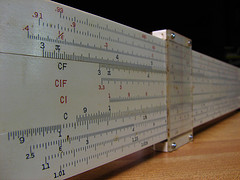December 3rd, 2009 by Eugene Barsky | No Comments »
Great news for UBC folks:
A new $23.2 million Network of Centres of Excellence (NCE) designed to advance Canada’s position as a global leader in new media, animation and games is to be hosted by the University of British Columbia.
The Graphics, Animation and New Media (GRAND) network will be headquartered at the Centre for Digital Media at Great Northern Way Campus (GNWC), a joint academic collaboration between UBC, Simon Fraser University, Emily Carr University of Art + Design and the British Columbia Institute of Technology.
GRAND will offer student learning and research opportunities and comprise 30 projects clustered around five themes: new media challenges and opportunities; games and interactive simulation; animation, graphics and imaging; and cross-cutting themes of social, legal, economic and cultural perspectives and enabling technologies and methodologies. The network will involve 50 investigators along with collaborating researchers and industry partners.
http://www.science.ubc.ca/news/334
Posted in Main, News, People, Science - undegraduate classes | No Comments »
November 13th, 2009 by Kevin Lindstrom | No Comments »
Sociologist Joseph Hermanowicz’ new book Lives in Science How Institutions Affect Academic Careers describes how the prestige of academic institutions often shapes the career of the individual.
“For all but a handful of the scientists he studies, the prestige of their institution pretty much determines their professional–and even their personal–destiny. Of the more than 4000 institutions of higher learning in the United States where a scientist can get a faculty post–ranging from world-renowned research universities to local community colleges–only a very limited number possess the resources, reputation, and connections needed for research careers at the highest levels of recognition.”
Click here for a full review of Hermanowicz’ book.
Submitted by Kevin Lindstrom Physical Sciences and Engineering Liaison Librarian
Posted in Astronomy, Atmospheric Science, Chemical and Biological Engineering, Chemistry, Civil Engineering, Earth and Ocean Sciences, General Science, Geography, Main, Materials Engineering, Mathematics, Mechanical Engineering, Mining engineering, News, People, Physics, Science - undegraduate classes, Wood Sciences | No Comments »
November 5th, 2009 by Eugene Barsky | No Comments »
Last month, UBC Computer Science Professors David Kirkpatrick and Alan Mackworth have been elected as Fellows the Royal Society of Canada (RSC). The RSC, founded in 1882, is Canada’s oldest and most prestigious scholarly organization. Election to the society is the highest honour that can be attained by scholars, artists and scientists in Canada. This year’s new Fellows will be inducted at a ceremony Nov. 28, 2009 in Ottawa.
It is a great honour for UBC Department of Computer Science that half of the UBC Fellows elected this year are from the department. “Alan and David are both brilliant scientists whose hard-won insights have had enormous impact on computer science internationally. Our department has always known that they are national treasures in our midst and we are thrilled that they are being recognized by the Royal Society of Canada with this honour,” says Department Head William Aiello.
Posted in News, People | No Comments »
October 21st, 2009 by Eugene Barsky | No Comments »

This month, ScienceWatch.com, has listed the ISI ranking in Computer Sciences by citations per paper—among countries that collected 5,000 or more citations during the period—to reveal weighted impact.
http://sciencewatch.com/dr/cou/2009/09octCOM/
“For articles with multiple authors from different nations, each nation receives full, not fractional, citation credit. Essential Science Indicators lists nations ranked in the top 50% for a field over a given period, based on total citations. In Computer Sciences, 79 nations are listed, meaning 158 were surveyed. 27 nations collected at least 5,000 citations during the period. The average citation rate for field of Computer Sciences is 3.14.”
It is great to see Canada listed as #8 (but after Scotland?)…
** photo by http://www.flickr.com/photos/rogersmith/
Posted in Main, News | No Comments »
October 9th, 2009 by Kevin Lindstrom | No Comments »
Good news regarding the UBC Library’s CISTI Orders Document Delivery Service. You no longer need to come to the Library to pick up your CISTI or Interlibrary Loan request.
For CISTI Orders articles, Interlibrary Loan staff are creating brief records in Relais (our ILL/DD software) in order to post the articles to the web and to send an email to the user. The article can be accessed a total of 3 times within 15 days from the date of the email message. After either accessing the article 3 times or 15 days have passed, the article is no longer available to the user.
Articles ordered from Interlibrary Loan are now being delivered to UBC users via post to web. When an article is received, Interlibrary Loan staff match the article to the correct request and then it is posted to the web. The user receives an email message with a link to the article. The user then clicks on the link to obtain the article. The user does not need a password to access their articles.
All articles received by 5:00PM Monday to Friday will be processed that day.
Under the Copyright Act, if the user wants to keep a copy of the article, they must print a copy. The article has been received for the purposoe of research or private study only. It is not for redistribution, retransmission or electronic storage. It cannot be used for any other purpose or reproduced without permission of the copyright owner.
Submitted by Kevin Lindstrom Science and Engineering Liaison Librarian
Posted in Earth and Ocean Sciences, General Science, Geography, Main, Materials Engineering, Mathematics, Mechanical Engineering, Mining engineering, News, Physics, Science - undegraduate classes, Statistics, Teaching, Uncategorized, Wood Sciences | No Comments »
August 18th, 2009 by Eugene Barsky | No Comments »

All IMS articles 2004 and forward are freely available in a postprint format on arXiv <http://arxiv.org/>, as well as those articles posted by authors.
From the IMS website: http://www.imstat.org/publications/arxiv.html
ArXiv is an open access, fully automated electronic archive and distribution server for research articles, now owned and operated by Cornell University, and partially funded by NSF. The main fields it covers are physics, mathematics, non-linear science, computer science, and quantitative biology. Recently, arXiv has cooperated with IMS and the Bernoulli Society to open up a new statistics category within mathematics. We expect this category to eventually grow into a top level archive comparable to e.g. mathematics and physics.
Great news, IMS!
** photo by http://www.flickr.com/photos/saz/
Posted in Main, Mathematics, News, Science - undegraduate classes, Statistics | No Comments »
June 24th, 2009 by Eugene Barsky | No Comments »
Here is the presentation Kevin Lindstom, Aleteia Greenwood and myself have presented at the second international m-Libraries Conference yesterday (Wed June 23, ’09) in Vancouver, BC
Abstract:
Introduction
While the concept is widely defined and interpreted, all Web 2.0 tools have certain characteristics in common; they are collaborative in nature, interactive, and dynamic. The Science and Engineering librarians at the University of British Columbia are collaborating with their liaison departments to record science and engineering podcasts, host them and share them with a wider audience.
Objectives
In this session, we discuss the use of podcasting as an outreach tool that connects a large academic science and engineering library with its users and raises users’ awareness of additional library services. Functionality, usability and practical applications of podcasting tools are reviewed.
Outcomes
At the end of this session, we will have demonstrated:
1) Overall usability of podcasting academic science and engineering content; tips and tricks when creating and tailoring podcasts to your community needs;
2) Use of podcasting as an outreach and community engagement tool in academic libraries and as a supplement for the traditional academic information resources.
Discussion
The strength of podcasting, to allow content to be created by the users for the users, makes it an appealing addition to the academic librarians’ toolbox. Podcasting is a service that many of our users might not expect from their library, which makes it a unique and attractive offering. It requires few resources, and the end result might exceed librarians’ expectations. We found podcasting to be a robust outreach tool and a service that raises the profile of the library and as such creates an opportunity for users to find additional library resources. Nevertheless, it is necessary for academic librarians to critically evaluate the continuous innovations of Web 2.0 technologies on an ongoing basis so that they are best prepared to put them into the
Here is the presentation in PDF format (100KB) – Portable Science and here it is embedded in the blog’s entry.
We will also add the podcast of this presentation in a few days as well…
Posted in General Science, Main, News, Teaching | No Comments »
June 9th, 2009 by Eugene Barsky | No Comments »

Thomson Reuters has released its latest figures for Canadian Science last week – http://sciencewatch.com/dr/sci/09/may31-09_2/
Between 2004 and 2008, Thomson Reuters indexed 226,232 papers that listed at least one author address in Canada. Of those papers, the highest percentage appeared in journals classified under the heading of environment/ecology, followed by psychiatry/psychology and geosciences. As the right-hand column shows, the citations-per-paper average for environment/ecology papers from Canada-based authors was 24% above the world average in the field (5.49 cites per paper for Canada versus 4.43 cites for the world). In fact, in all the fields shown here, the impact of Canadian research exceeded the world average, with particularly strong performance in space science (44% above the world average), physics (43% above), and agricultural sciences (+29%).
It is great to see that we are producing a decent share of world’s research. But it seems that Engineering is one of weak points!
** Photo by tripleman
Posted in Astronomy, Atmospheric Science, Chemical and Biological Engineering, Chemistry, Civil Engineering, Earth and Ocean Sciences, General Science, Geography, Main, Materials Engineering, Mathematics, Mechanical Engineering, News, Physics, Science - undegraduate classes, Statistics, Wood Sciences | No Comments »
May 27th, 2009 by Eugene Barsky | No Comments »

Thomson Reuters’ owned ScienceWatch.com has recently released the figures for “Top 20 Countries in Engineering“.
…is a listing of the top 20 countries which, as of the latest bimonthly update of Essential Science IndicatorsSM, attracted the highest total citations to their papers published in Thomson Reuters-indexed journals of Engineering over an 11-year period, (1998-December 31, 2008). These countries are of a pool of 96 countries comprising the top 50% ranked by total citation count in this field.
It is great to see Canada as #7 with 4.39 citations per paper!
** Photo by tim_d
Posted in Chemical and Biological Engineering, Civil Engineering, General Science, Main, Materials Engineering, Mechanical Engineering, News, Science - undegraduate classes | No Comments »
May 8th, 2009 by Kevin Lindstrom | No Comments »
Statistics isn’t just about bayesian disease mapping and analyzing incomplete multivariate data. Statistics has some very important applications for analyzing hockey – yes, ice hockey. While my team hasn’t made the playoffs for a while except for that glorious 2006 run, it might be interesting to for any of you hockey statisticians to apply the research to the teams currently playing in the NHL playoffs.
Here’s a sample of some the articles available in MathSciNet and Current Index to Statistics dealing with ice hockey.
Thomas, Andrew C. (2007) “Inter-arrival Times of Goals in Ice Hockey,” Journal of Quantitative Analysis in Sports: Volume 3: Issue 3, Article 5. Available at: http://www.bepress.com/jqas/vol3/iss3/5
Thomas, Andrew C. (2006) “The Impact of Puck Possession and Location on Ice Hockey Strategy,” Journal of Quantitative Analysis in Sports: Volume 2: Issue 1, Article 6. Available at: http://www.bepress.com/jqas/vol2/iss1/6
Anthology of Statistics in Sports. Edited by Jim Albert, Jay Bennett and James J. Cochran. ASA-SIAM Series on Statistics and Applied Probability, 16. 2005.
Gill, Paramjit S. (2000) “Late-Game Reversals in Professional Basketball, Football, and Hockey” The American Statistician, Volume 54, Number 2 (May, 2000), pp. 94-99 http://www.jstor.org/stable/2686024
The Journal of Quantitative Analysis in Sports is a great place to browse.
Submitted by Kevin Lindstrom UBC Science and Engineering Librarian
Posted in Amusing stuff, Atmospheric Science, Chemical and Biological Engineering, Chemistry, Civil Engineering, Earth and Ocean Sciences, General Science, Geography, Main, Materials Engineering, Mathematics, Mechanical Engineering, News, Physics, Podcasts, Science - undegraduate classes, Statistics, Uncategorized, Wood Sciences | No Comments »




